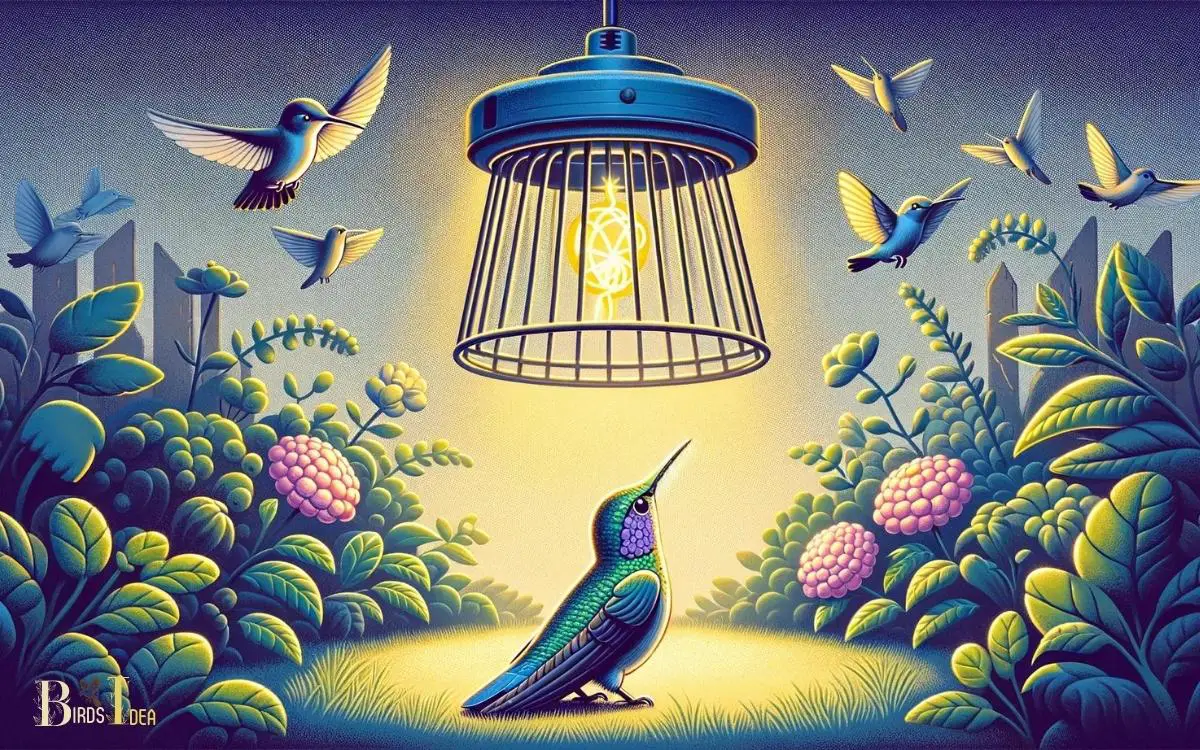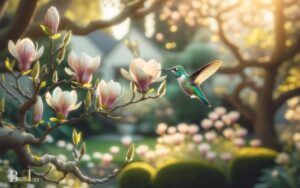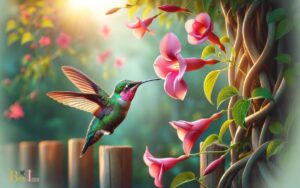Are Hummingbirds Attracted to Bug Zappers? No!
No, hummingbirds are not attracted to bug zappers. Bug zappers primarily attract insects through the use of ultraviolet light, which is not appealing to hummingbirds.
Hummingbirds are attracted to nectar-producing flowers and feeders with sweet liquid solutions.
They have little interest in the type of light emitted by bug zappers, as their diet consists mainly of nectar and insects.
Using hummingbird feeders with a proper nectar solution is the most effective way to attract these birds to your garden.

Key Takeaway
Hummingbird Behavior and Sensory Perception
Hummingbirds are known for their remarkable visual acuity and keen sensory perception, which guide their foraging behaviors and flight patterns.
Their vision allows them to perceive a wide spectrum of colors, including ultraviolet light, aiding their identification of flowers with rich nectar sources.
Additionally, their sensory perception enables them to detect subtle movements, such as those made by insects or potential predators.
This acute awareness is crucial for their survival and plays a significant role in their feeding habits, as they can efficiently locate and extract nectar from flowers.
Furthermore, their exceptional agility in flight is a product of their sensory abilities, allowing them to navigate through complex environments with precision.
Understanding these aspects of hummingbird behavior and sensory perception provides insight into their interactions with their surroundings, including potential attractions to bug zappers.
Bug Zapper Attraction Mechanisms
Despite being designed to attract and eliminate insects, bug zappers may inadvertently capture other flying creatures in their vicinity.
The mechanisms that attract insects to bug zappers include:
- UV light attraction: Bug zappers emit ultraviolet (UV) light, which is highly attractive to many flying insects. The UV light serves as a beacon, drawing insects towards the bug zapper.
- Carbon dioxide emission: Some bug zappers release carbon dioxide, mimicking the scent of human breath, which also attracts certain insects. This feature is particularly effective in luring mosquitoes and other blood-feeding insects.
- Heat attraction: Bug zappers generate heat, which can be appealing to insects seeking warmth. This heat source can further entice flying insects to the vicinity of the bug zapper.
- Pheromone lures: Certain bug zappers use pheromone baits to attract specific types of insects, such as moths or beetles, by mimicking the scent of potential mates or food sources.
Understanding Hummingbird Feeding Habits
One significant aspect of hummingbird feeding habits is their reliance on nectar from flowers as their primary food source.
Hummingbirds have a rapid metabolism and need to eat frequently, with some species consuming half their body weight in food each day. In addition to nectar, they also consume small insects and spiders for protein.
Understanding their feeding habits is crucial for creating suitable environments for these fascinating birds.
| Feeding Habit | Description |
|---|---|
| Nectar | Primary food source, provides energy for flight |
| Insects | Supplementary protein source for growth and energy |
| Feeding Frequency | Multiple feeding trips throughout the day |
| Flower Selection | Preference for brightly colored, tubular flowers |
| Territory | Defend feeding areas from other hummingbirds |
Impact of Bug Zappers on Hummingbird Populations
The reliance of hummingbirds on insects for protein makes it important to consider the potential impact of bug zappers on their populations.
Bug zappers may have a detrimental effect on hummingbird populations due to the following reasons:
- Disruption of food source: Bug zappers indiscriminately eliminate insects, potentially decreasing the availability of natural food for hummingbirds.
- Risk of harm: Hummingbirds may be attracted to bug zappers due to the light they emit, increasing the risk of injury or death from electrocution.
- Disturbance of feeding behavior: The presence of bug zappers in an area may cause hummingbirds to alter their foraging patterns or avoid certain areas altogether.
- Potential population decline: If bug zappers lead to decreased insect populations, it could ultimately impact the breeding success and overall population of hummingbirds in an area.
Tips for Attracting Hummingbirds Without Bug Zappers
Attracting hummingbirds without relying on bug zappers involves creating a habitat that provides natural food sources and safe resting spots for these tiny birds.
By incorporating specific elements into the garden or yard, individuals can attract hummingbirds without the use of bug zappers.
The following table provides a summary of tips for attracting hummingbirds without resorting to bug zappers:
| Food Sources | Safe Resting Spots | Water Features |
|---|---|---|
| Flowering plants | Shrubs and trees | Birdbaths |
| Hummingbird feeders | Dense foliage | Misters or fountains |
| Native wildflowers | Trellises with vines |
Creating a welcoming environment for hummingbirds without the use of bug zappers not only benefits these beautiful birds but also enhances the overall natural beauty of the surroundings.
Conclusion
As the sun sets and the bug zapper hums to life, many wonder if hummingbirds are attracted to its glowing allure.
The answer may surprise you. With their keen sensory perception and unique feeding habits, hummingbirds are not likely to be drawn to bug zappers.
But how can you attract these beautiful creatures to your garden without relying on bug zappers? Stay tuned for some tips and tricks to create a hummingbird haven in your own backyard.






